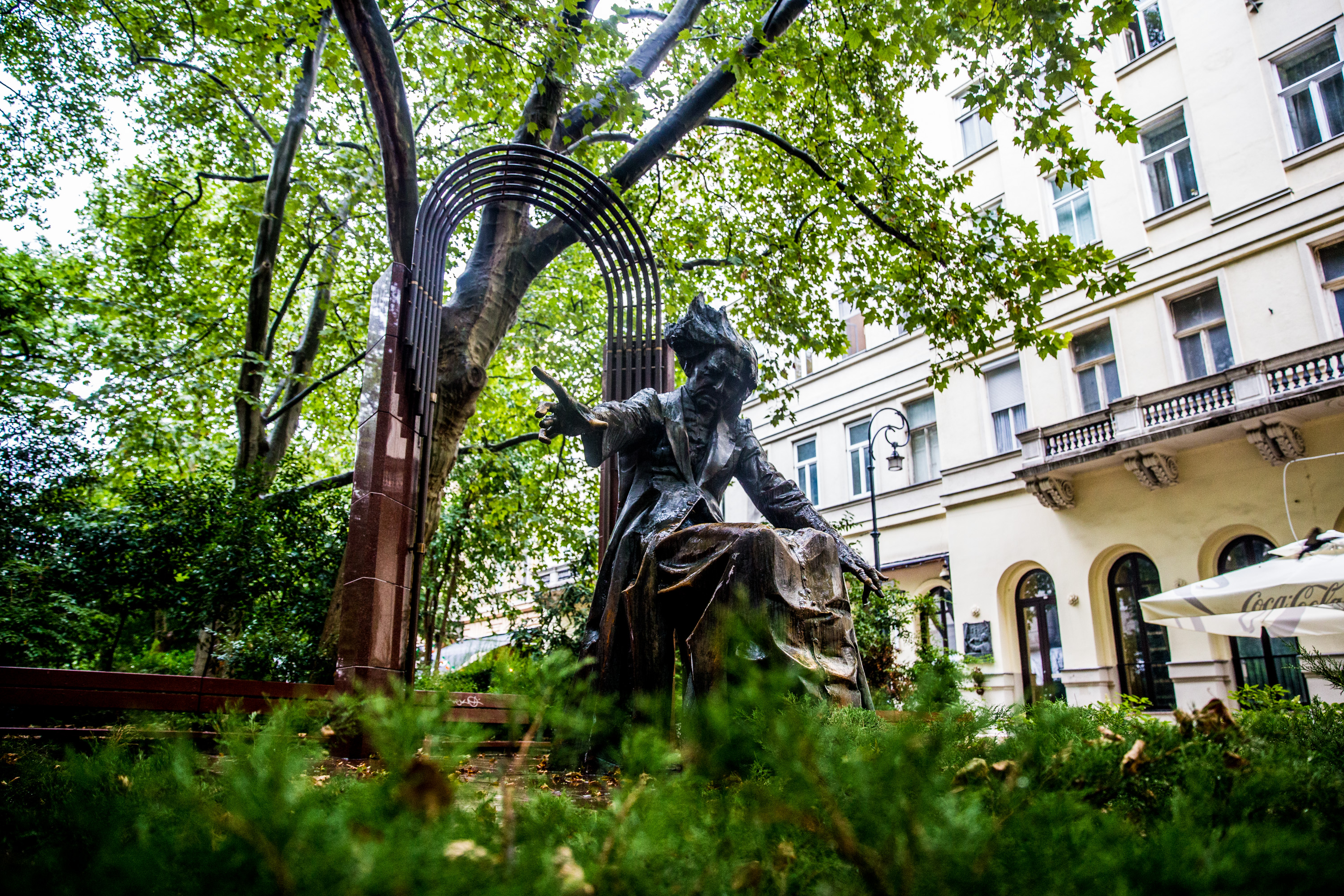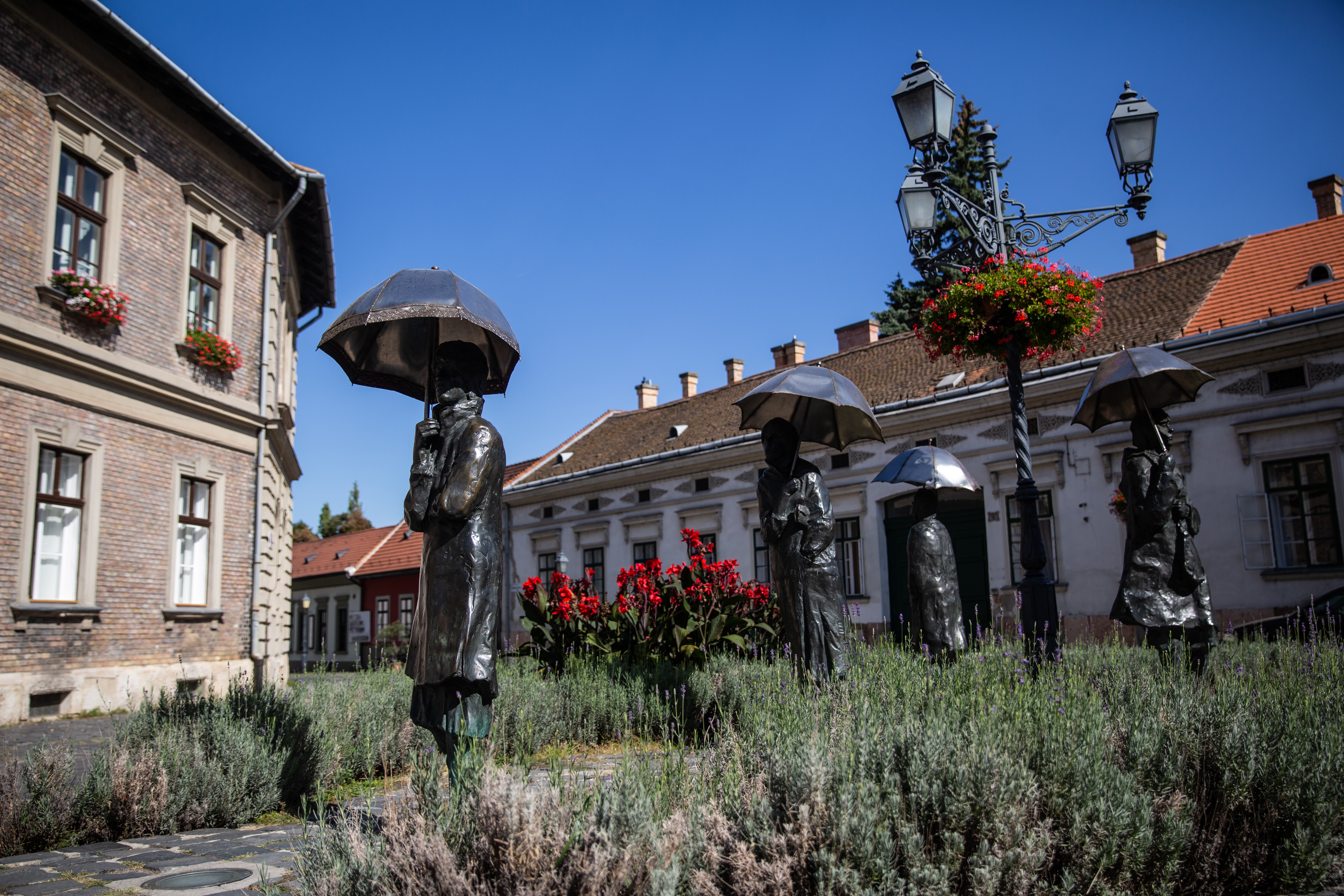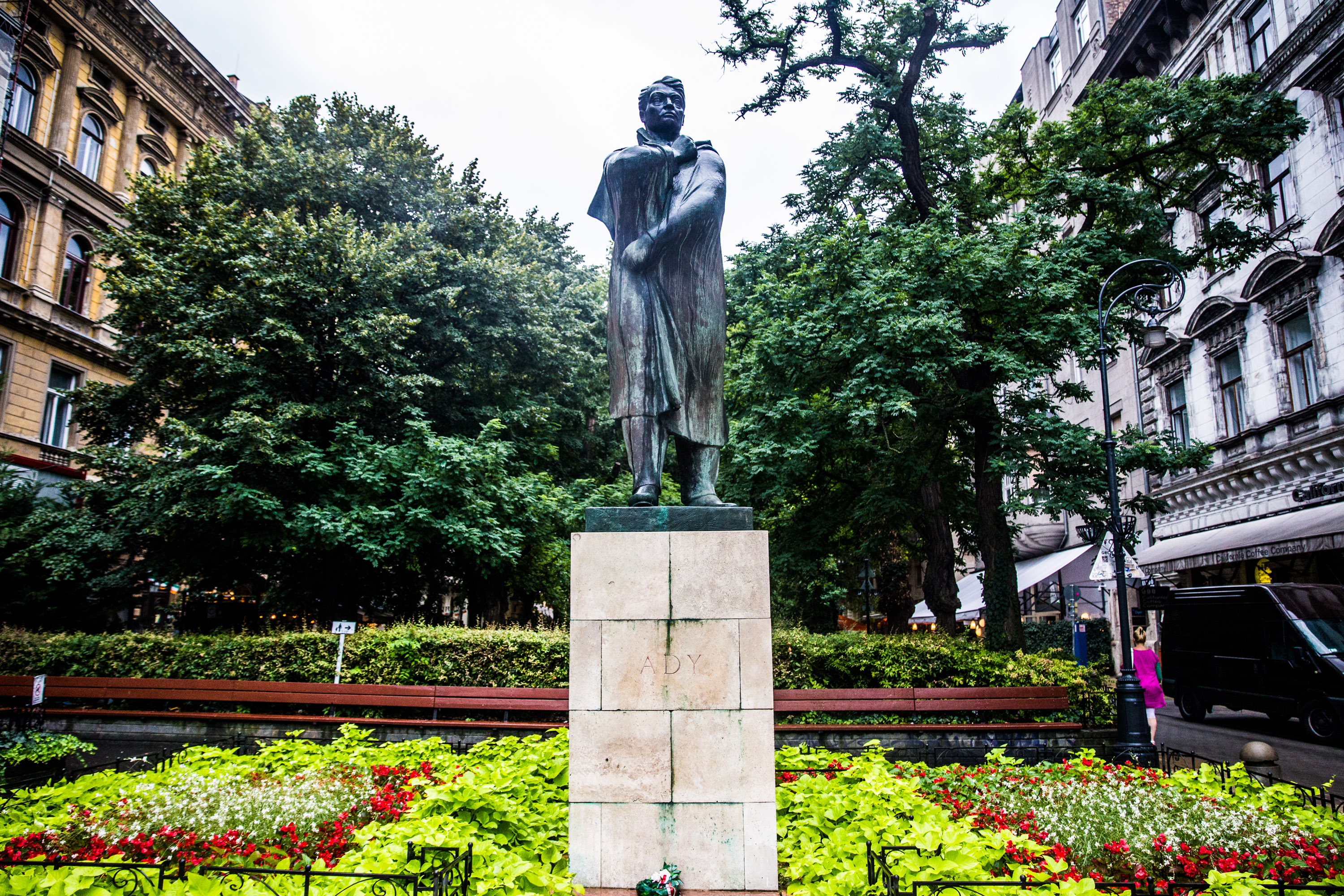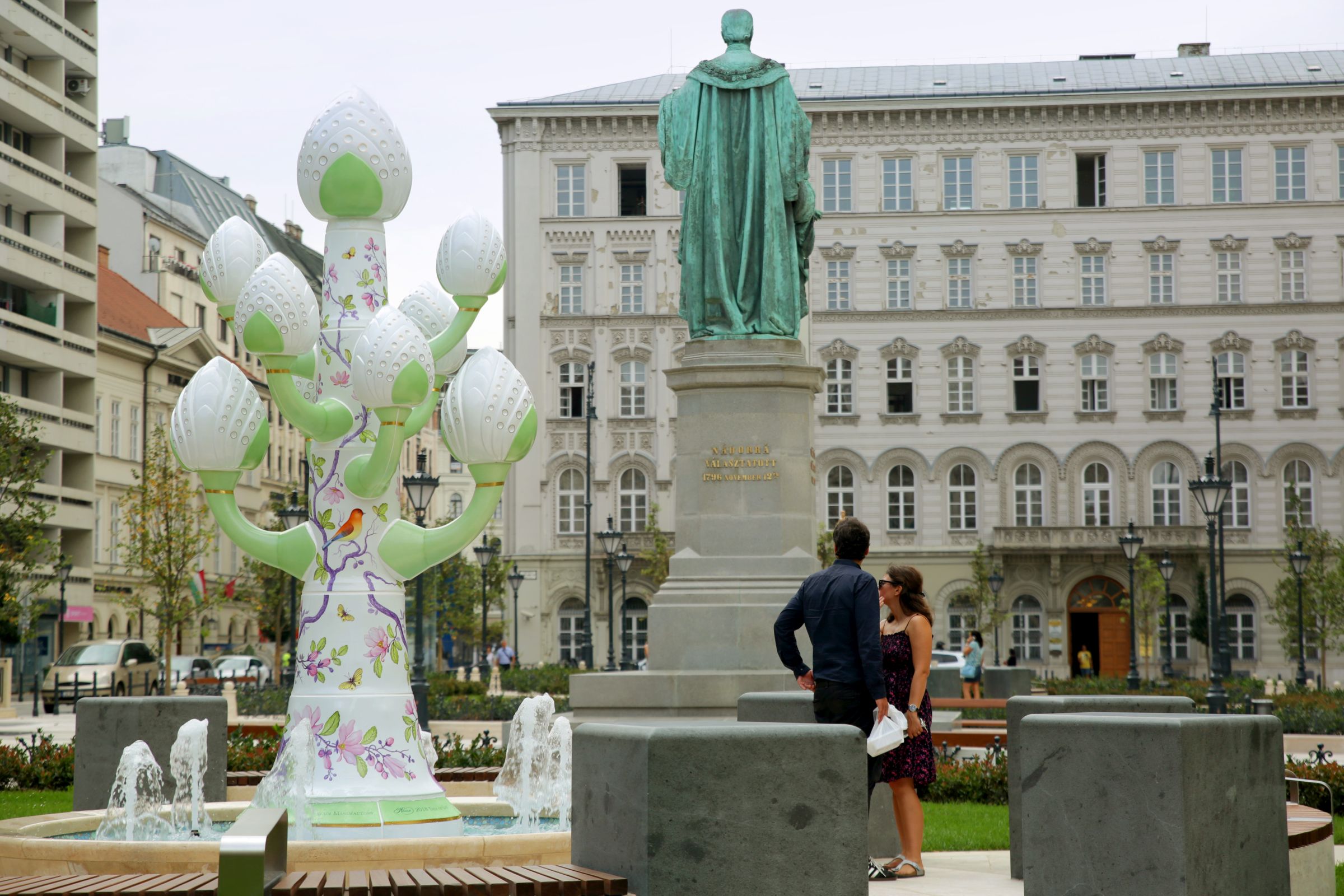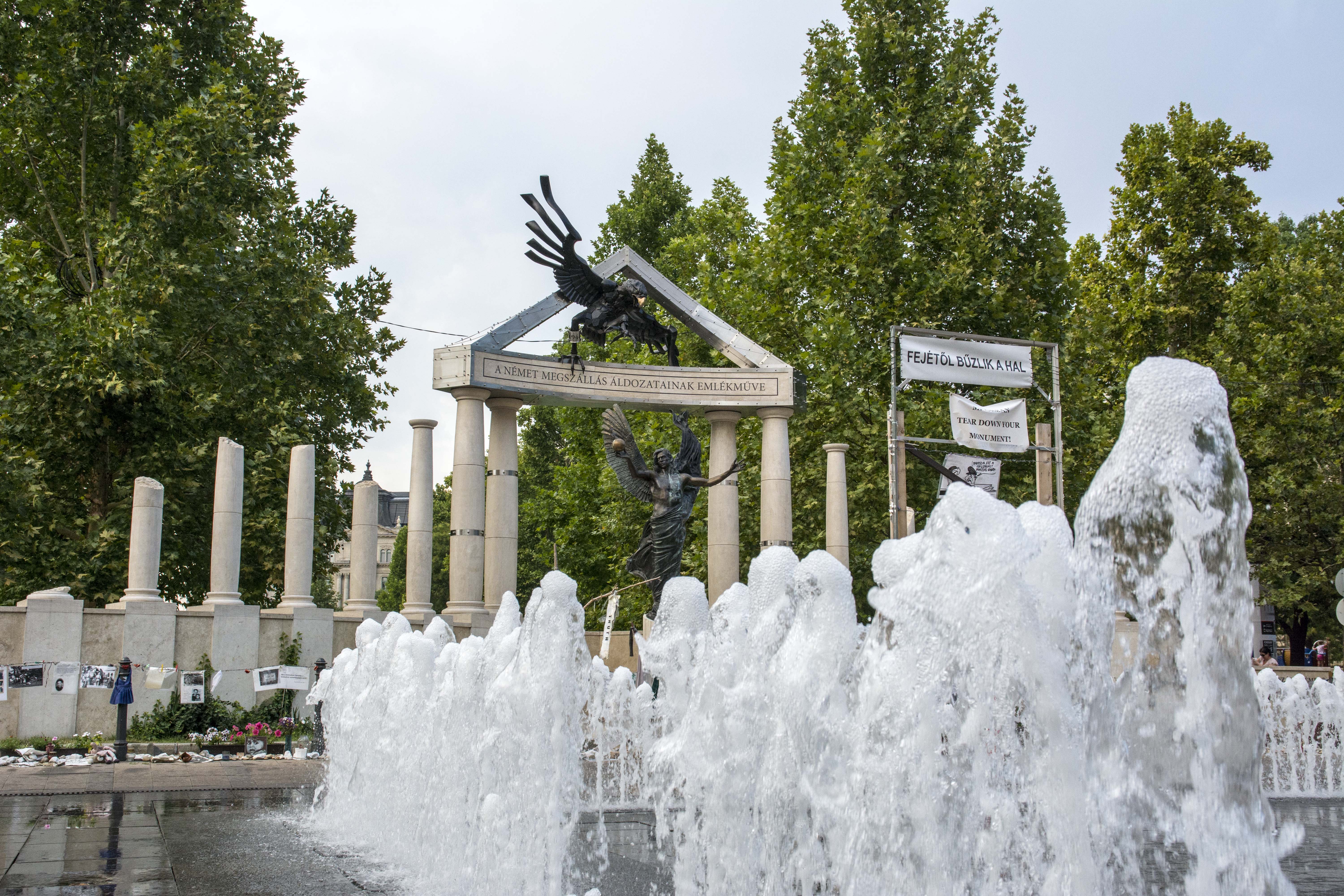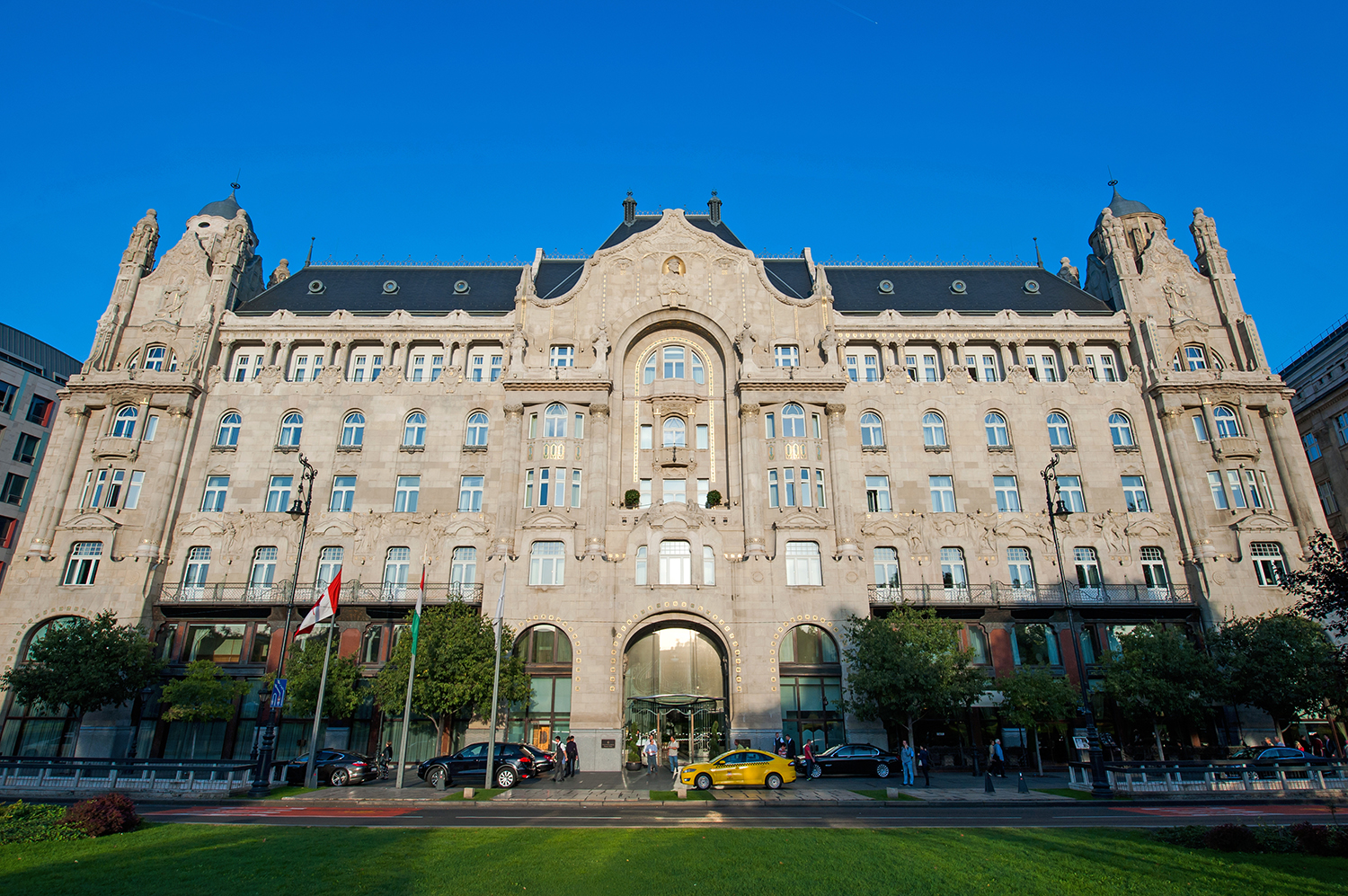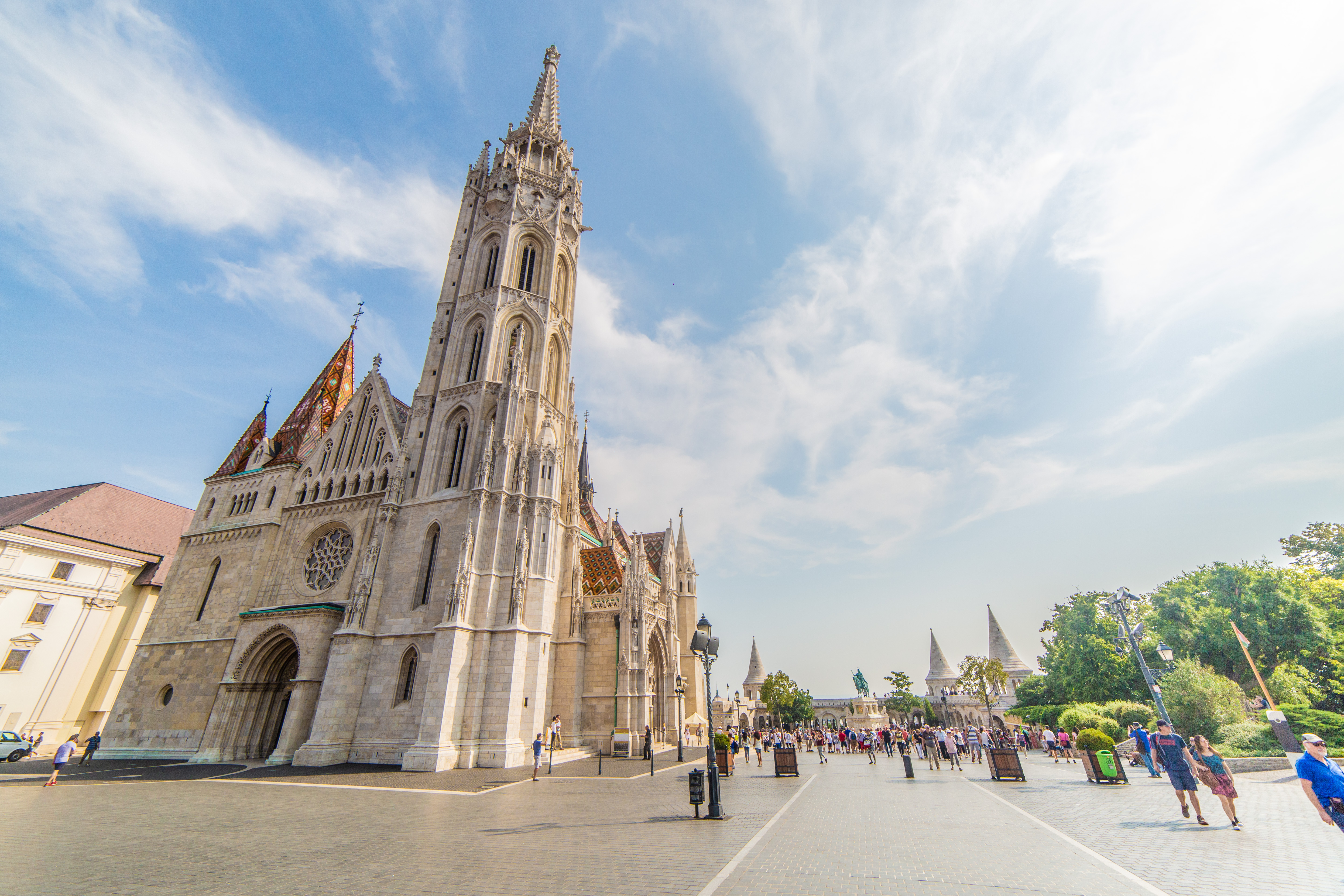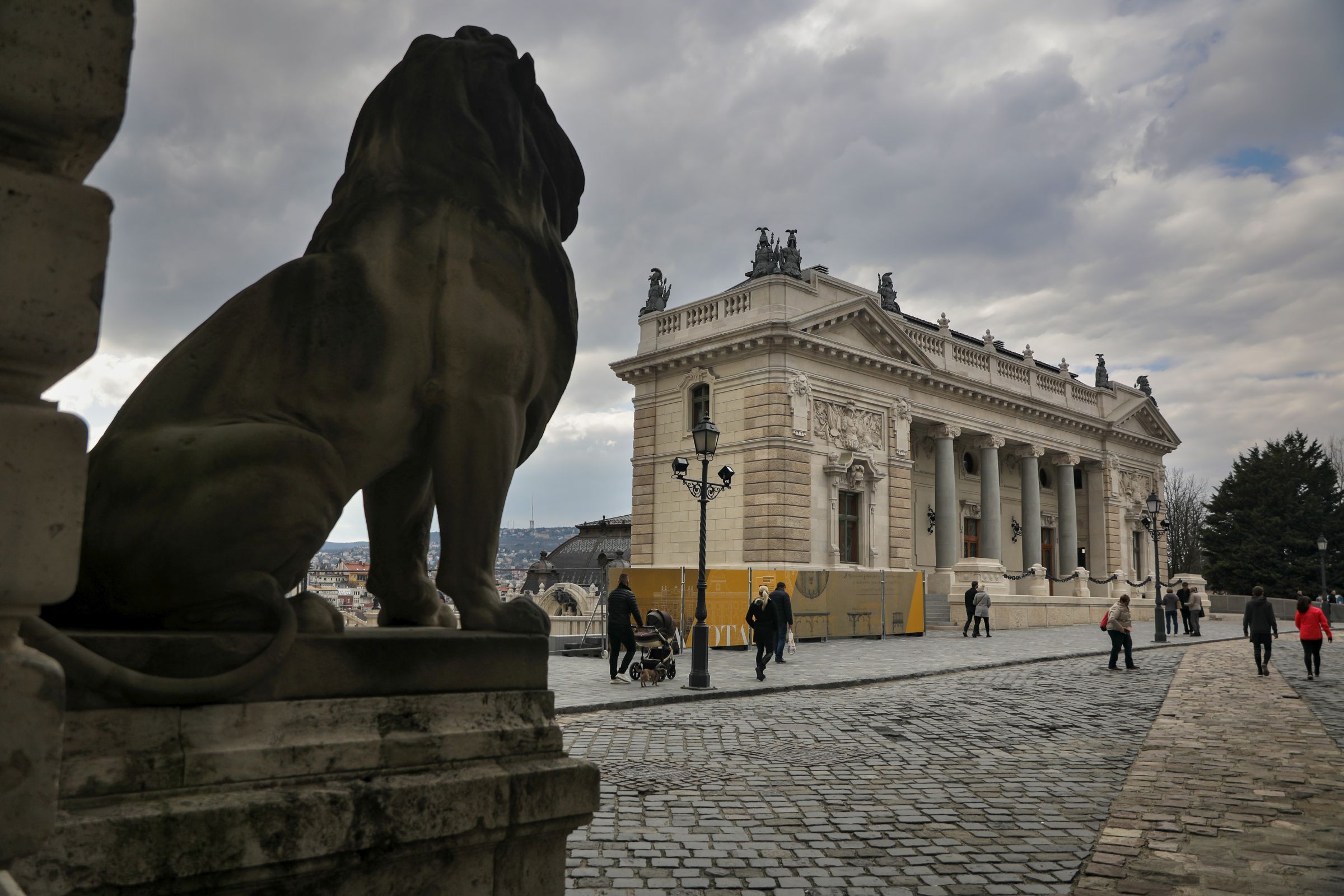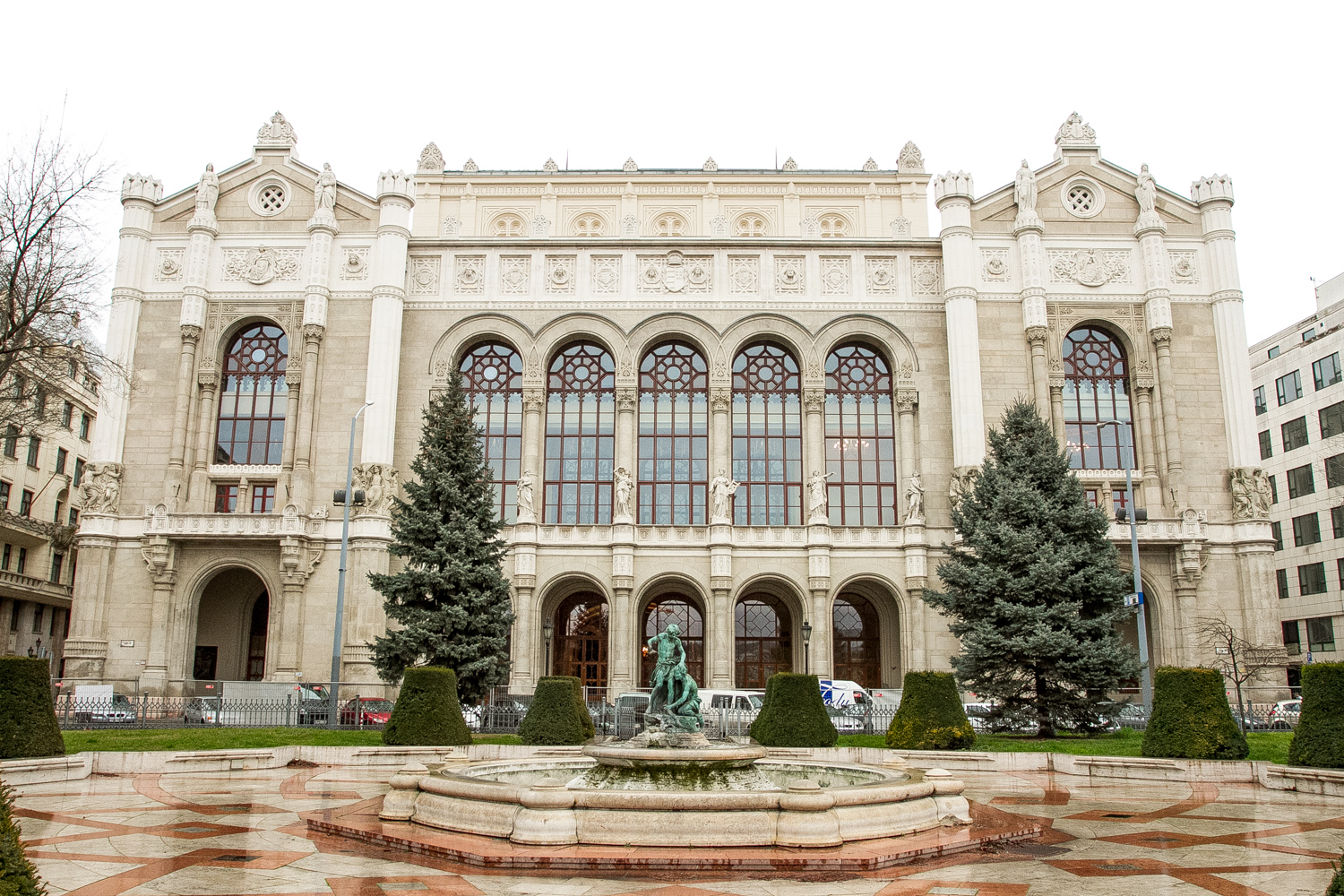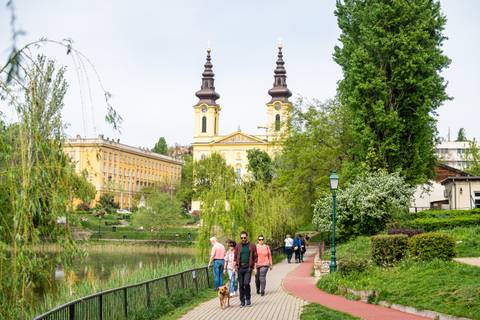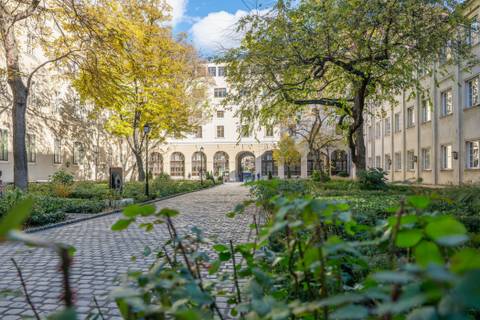Crossing points, gathering places and urban showcases, squares in Budapest are just as attractive as the buildings and bridges they may lead to. With so much around the Hungarian capital being revamped and embellished, many of the city’s main spaces have undergone a complete makeover and made more pedestrian- and cycle-friendly. That notwithstanding, history has had a great part to play in shaping the prettiest of Budapest’s squares – medieval beheadings and Habsburg executions once took place in the convivial surroundings today conveniently provided with public benches for relaxed admiration.
1/10
Fő tér
This cobbled main square is as atmospheric as the surrounding district
of Óbuda itself, lined by the Baroque façades of the Zichy Palace and centrepieced
by a line of ladies bearing umbrellas. Actually inspired by a rainy street
scene in Paris, Esernyős (‘Umbrella Carriers’), created by renowned
sculptor Imre Varga in 1986, also lends it name to the main cultural venue
here, the recently opened Esernyős.
Cultural attractions here, in fact, are manifold, Fő tér merging with adjoining
Szentlélek tér and providing access to the Kassák Museum and Vasarely Museum, featuring key
Hungarian artists of the 20th century. In winter, a public skating rink is set up
on the square, providing timeless seasonal scenes. To see how it all looks the
rest of the year, see our short video here.
2/10
Liszt Ferenc tér
Just off showcase boulevard Andrássy út, this picturesque square is named
after Hungary’s most famous composer, Franz Liszt, whose statue sits in the middle,
in full creative mode. As we recently discovered,
the long shape of Liszt Ferenc tér is due to its past iteration as a silk
factory. Trees have been a feature since the early 1800s, and today you can
hide away in greenery, lost in a book, while traffic glides down Andrássy út seemingly
obliviously. The composer is also namechecked by the ornate building anchoring
the square on the Király utca side, the Franz Liszt Music Academy, rebuilt here
in Art Nouveau style in 1907 and fronted by a curious statue of conductor György
Solti. Standing guard at the gateway to the square from Andrássy út, poet Endre
Ady stares out in dramatic fashion.
3/10
József nádor tér
Perhaps the lesser-known of Budapest’s downtown squares, Nádor tér (as
it is usually referred to) was completely relandscaped in recent years. Now an orderly mainly green space, featuring a porcelain
statue created by renowned Hungarian manufacturers Herend and Zsolnay, the square
also offers another notable benefit for its local residents: an underground car
park, with new spaces at street level. All feels very relaxed, considering you’re
slap in the city centre, no more than five minutes’ walk from Vörösmarty tér
and Erzsébet tér.
4/10
Március 15 tér
In the shadow of Elizabeth Bridge on the Pest side, Március 15 tér is
unusual in that it contains rare examples of Roman ruins on this side of the
river – most are to be found across the Danube and further north up in Óbuda. Flanked
by the twin towers of the Inner City Parish Church on one side, sleek white Elizabeth
Bridge and the Danube on the other, ‘March 15 Square’ cannot fail to be fail to
be attractive, but its history is somewhat more patchwork.
First guarded first against barbarian hordes by Roman centurions – as depicted
in bronze form by sculptor István Tar in 1971 – the square was a market place for
many centuries, proximity to the Danube meaning that fish was the main focus.
Hal tér (‘Fish Square’) then became Egyház tér (‘Church Square’) to today’s name
honouring the Hungarian Revolution of 1848. Shabby by the early 1990s, the square
was gradually embellished and now provides a pretty vista for those lucky
enough to dine on the expansive terrace of the Kiosk Pest restaurant.
5/10
Szabadság tér
The
size and grandeur of this most stately of squares in the city centre is no coincidence.
Szabadság tér owes
its extensive dimensions to the Habsburg era, when the Bastille-like Újépület
stood here. It was at these fortified barracks that the Austrians executed
patriotic Count Lajos Batthyány in 1849. After its demolition in the late
1890s, the public square that emerged took the name Szabadság (‘Liberty’).
Huge, imposing institutions rose around its parameters, most notably the Stock
Exchange Palace where Hungarian State Television was once housed. Overshadowed
by bank headquarters and offices of prominent authorities, sundry statues and
monuments reflect the ebbs and flows of Hungarian history. Take Harry H.
Bandholtz, the US major general who physically prevented Romanian soldiers from
looting Hungarian treasure in the chaos after World War I. Erected in 1936,
removed in 1949 then restored here outside the American Embassy in 1989, this
memorial touches upon 70 years of convoluted global politics. Ronald Reagan and
George Bush are equally celebrated. Another monument, to the Soviet forces who liberated, but later occupied, Hungary in World War II still stands here – a
rare example of monumental Communist iconography that hasn’t been shipped out
to Memento
Park. Its fate has long been a topic of intense debate. Offsetting the
geopolitics, Szabadság tér is today a place of leisure, an urban green space
dotted with couples and picnickers, centrepieced by pavilion-like eateries
and embellished with an interactive fountain.
6/10
Széchenyi István tér
The grand façade of the Gresham Palace,
painstakingly rebuilt as the Four Seasons hotel in authentic Art Nouveau style
in the early 2000s, overlooks what was for many years Roosevelt tér. Later renamed
after the revered Hungarian statesman responsible for Chain Bridge adjoining
the square, this attractive space comprises mainly greenery, a pleasant
interlude for passengers circling it as cars and buses negotiate the crossings
and turnings here. With Chain Bridge closed until 2023,
traffic has subsided somewhat. Pedestrians may admire the grand Hungarian
Academy of Sciences flanking the north side of the square while at the opposite end, five-star
hotels line the Danube Promenade, the riverbank served by scenic tram 2.
7/10
Szentháromság tér
Could there be a grander sight in all Budapest than Szentháromság tér, towered
over by Matthias Church and the Fishermen’s Bastion atop Castle Hill?
As well as its picture-postcard attributes, cobbled ‘Holy Trinity Square’ is also
historic, created after the Recapture of Buda in 1686 when the medieval buildings
here were destroyed as Habsburg forces dispatched the occupying Ottoman
foe. This area was reconfigured into a square, first centrepieced by a Holy Trinity
column to protect against the Plague, then by the Holy Trinity Monument still
standing here today. Deep in tourist central, horse-driven carriages clip-clop
around, while car traffic is limited to residential passholders and guests using the
landmark Hilton Hotel just behind. Note also the statue of St Stephen, Hungary’s
founding king, and, on the corner of Szentháromság utca and Úri utca, the equestrian
statue of Count András Hadik, his horse’s testicles shining due to being rubbed
for good luck by many generations of students prior to exams.
8/10
Szent György tér
One of the most far-reaching architectural initiatives currently taking
place in Budapest is the Hauszmann Project.
Now almost halfway through, this five-year strategy aims to renovate and
revive the historic façades and landmarks around Buda Castle, rebuilt in the late
1800s by renowned architect Alajos Hauszmann and almost completely destroyed
during the Siege of Budapest in late 1944/early 1945. Given that much of the site
was a royal palace, the incoming Communist authorities were hardly swift in
rebuilding the complex to its former glory. From 2019, this heritage location has
since been given the expert attention it deserves, much centring on grand Szent
György tér, a courtyard-like space in the shadow of the former royal palace.
History underscores every brick of this open cobbled area. It was here that
King László V beheaded King Matthias’ brother, Mátyás Hunyadi, in 1457 and
here, in 1514, that Archbishop Tamás Bakócz read a Papal decree to set in
motion a fateful peasant uprising. Like the Royal Stables and adjoining Csikós
Courtyard,
the square is also being transformed within the framework of the Hauszmann
Project, ornamental apple trees and thousands of brightly coloured flowers recently
planted. The cobblestones and other surfaces are being relaid, and the ruins of
former Szent Zsigmond Church given a greener setting. Plenty of benches will
also be provided, the panorama dramatic from various viewpoints around the square.
9/10
Szent István tér
Best admired at special times of the year, most notably Christmas, when
projections are beamed onto the grandiose façade of St Stephen’s Basilica,
‘St Stephen’s Square’ provides the pleasant if unadorned urban stage for the huge,
domed church to show off its 19th-century grandeur. Lined with
terrace restaurants, the square is perhaps best viewed as you approach from Zrinyi
utca, the Basilica honing into view in dramatic fashion.
10/10
Vigadó tér
The pretty, riverside square of Vigadó tér is best known for two things:
the city’s main boat station for sightseeing trips and services up to Szentendre
and beyond; and the Pesti Vigadó itself. Elegantly stretching almost the whole length of the eastern flank of
the square with the city centre behind it, this concert hall surveys the grand
sweep of the Danube, a large, well-kept expanse of green dividing this 150-year-old
grande dame from the river. Franz Liszt and Johann Strauss the younger and older
all appeared here along with Arctic explorers and pioneers of early aviation,
who all gave presentations. When Louis Blériot wanted to show the Hungarian
public the plane in which he made the first ever crossing of the English
Channel, this square was the perfect showcase. Today, there are no aeroplanes
but a fountain statue of two boys playing the water, a sculpture that replaced
a Soviet war memorial. By the tracks for regularly passing tram 2, sculptor Dávid
Raffay created the life-size bronze figures of a girl playing with her dog,
unveiled in 2007.
